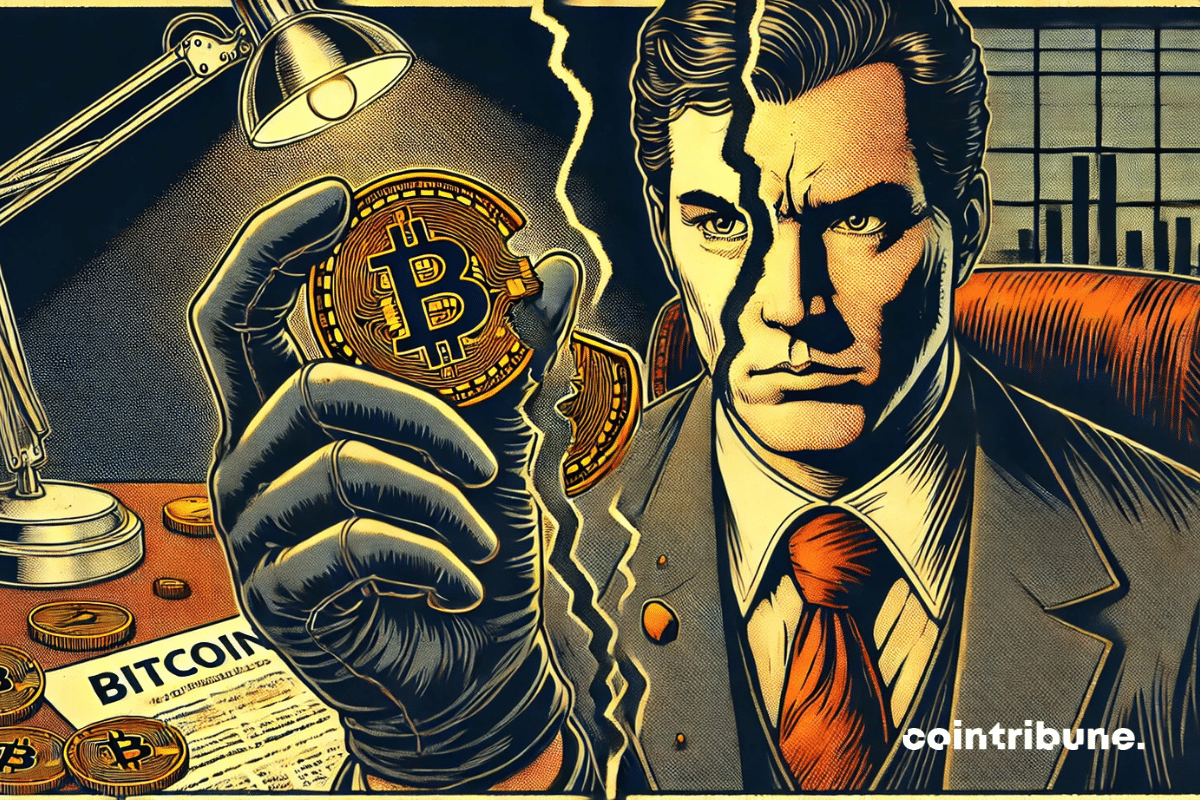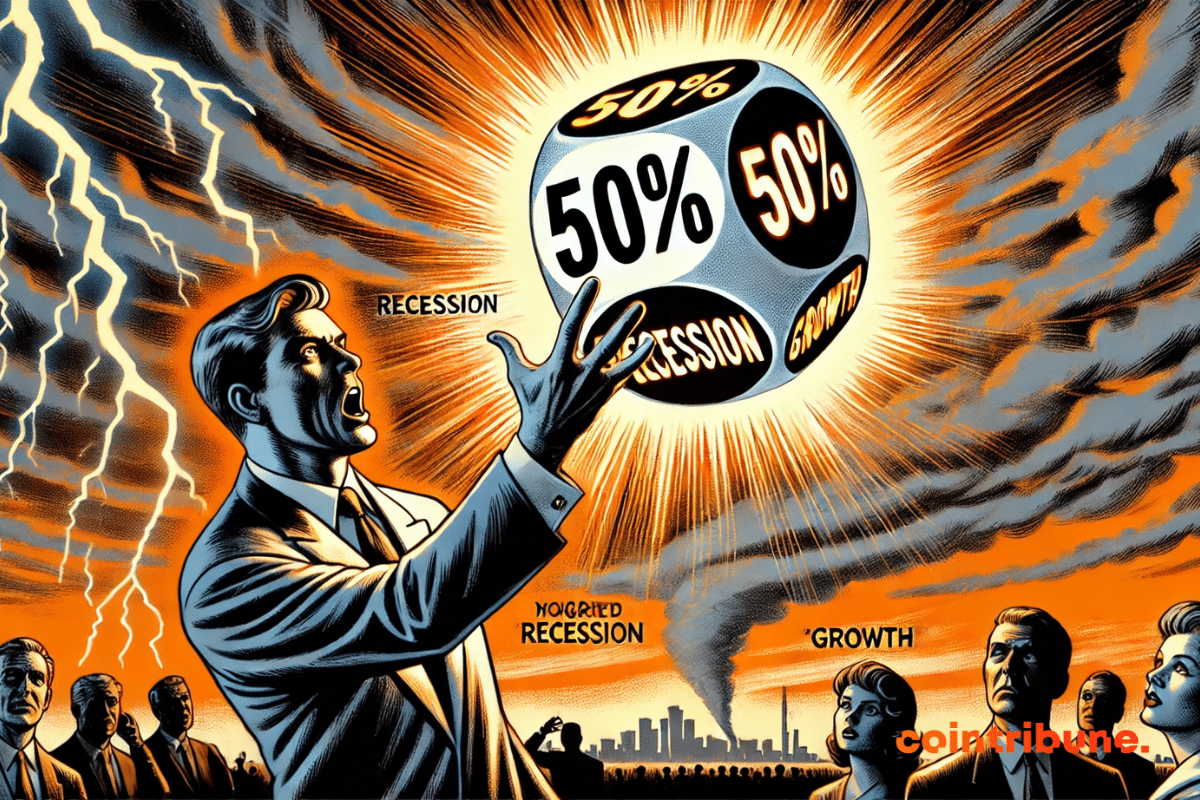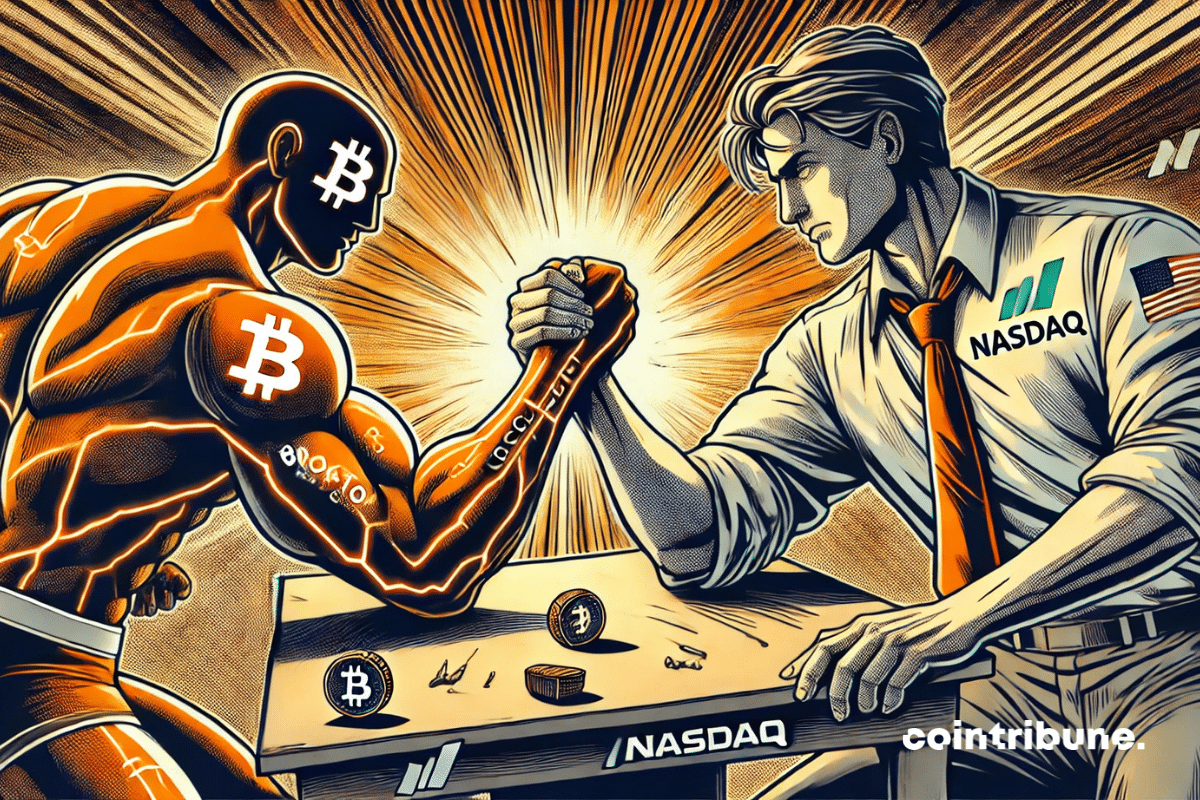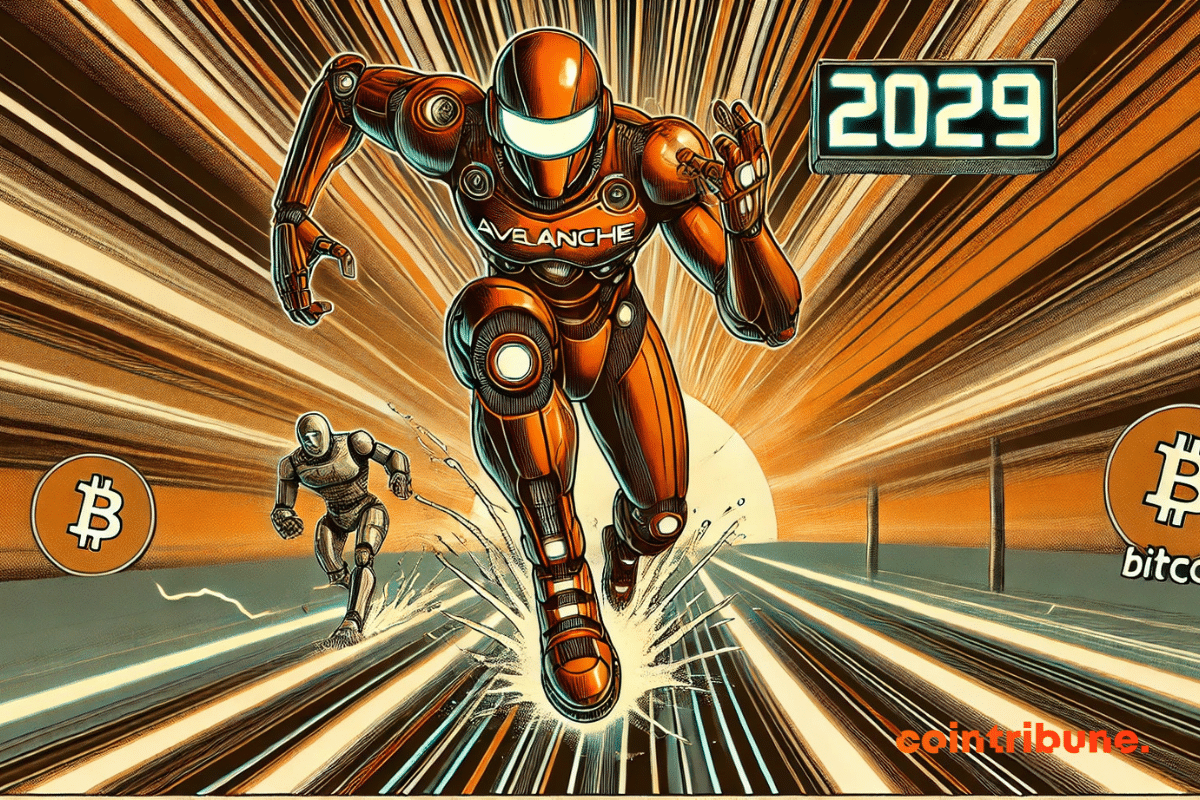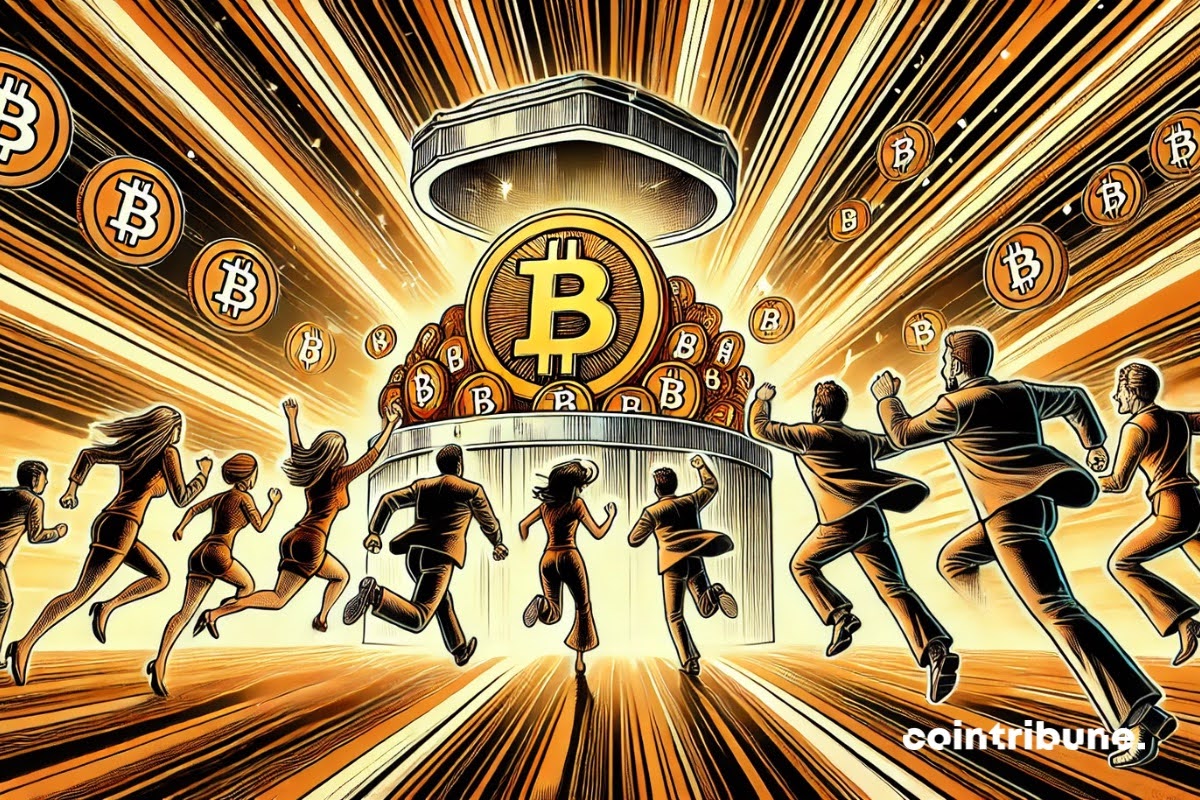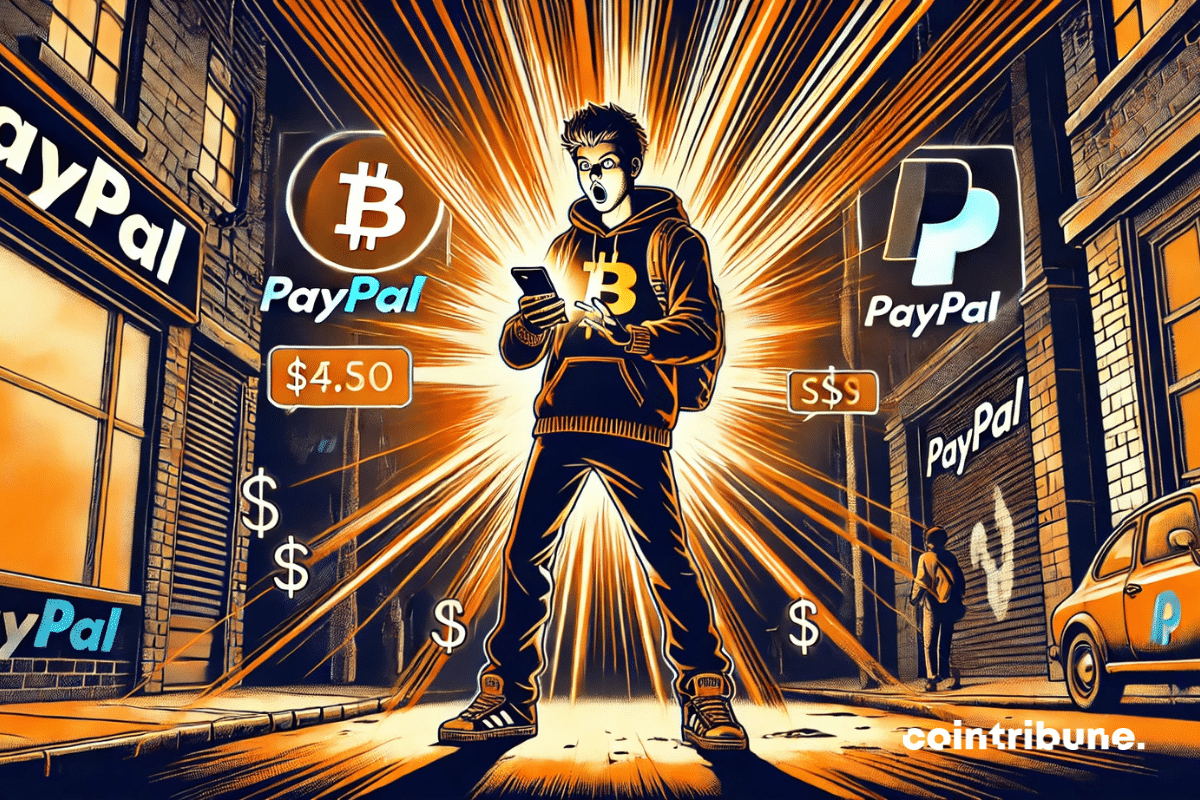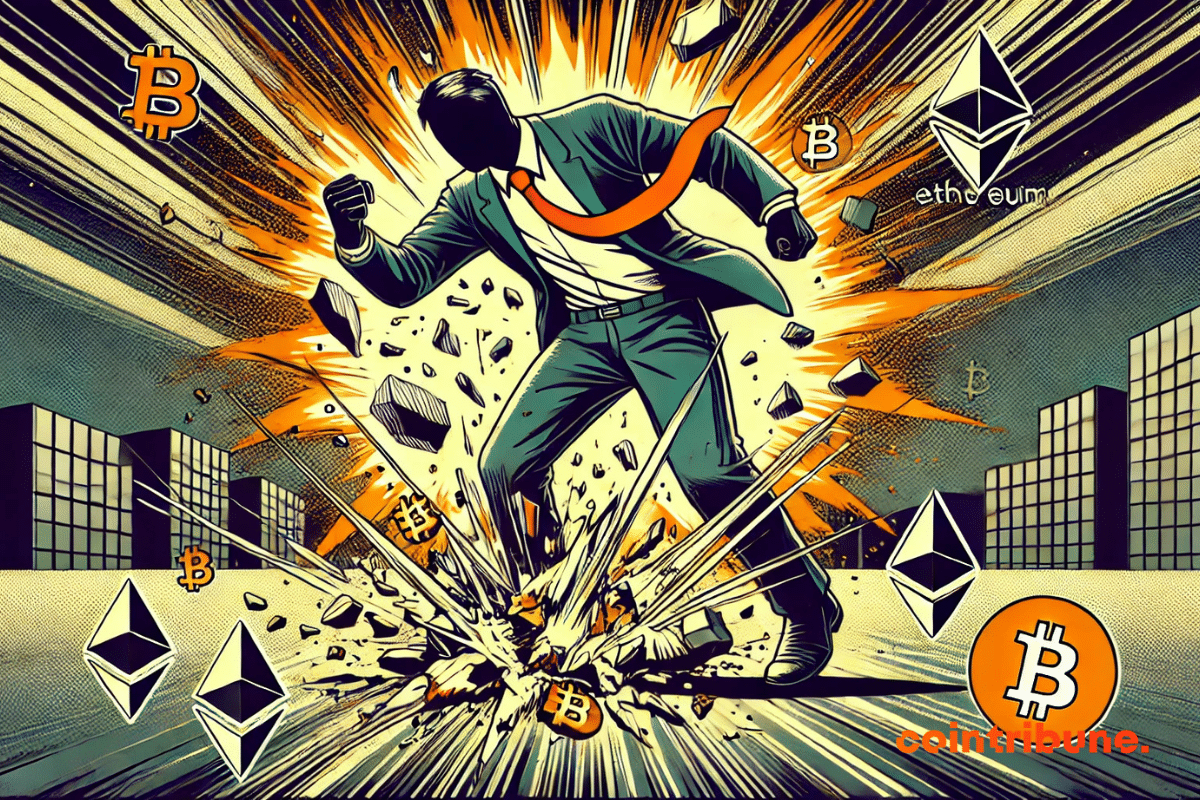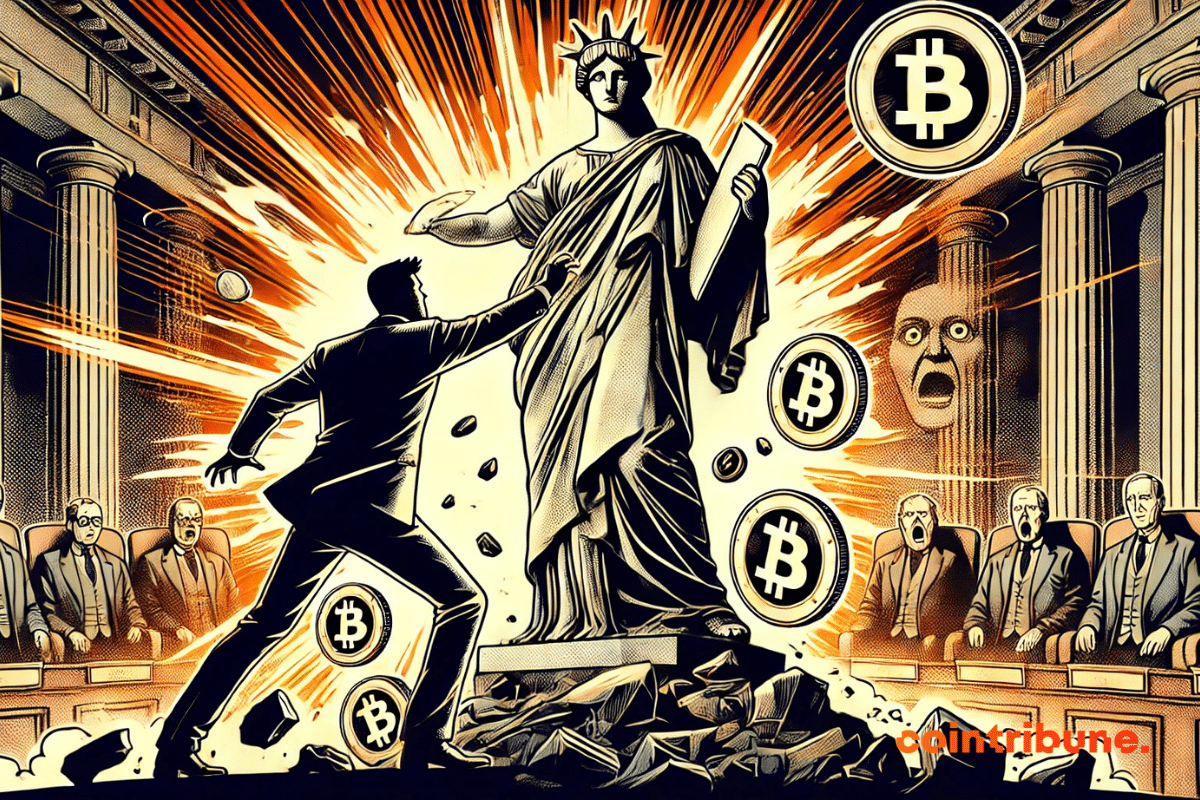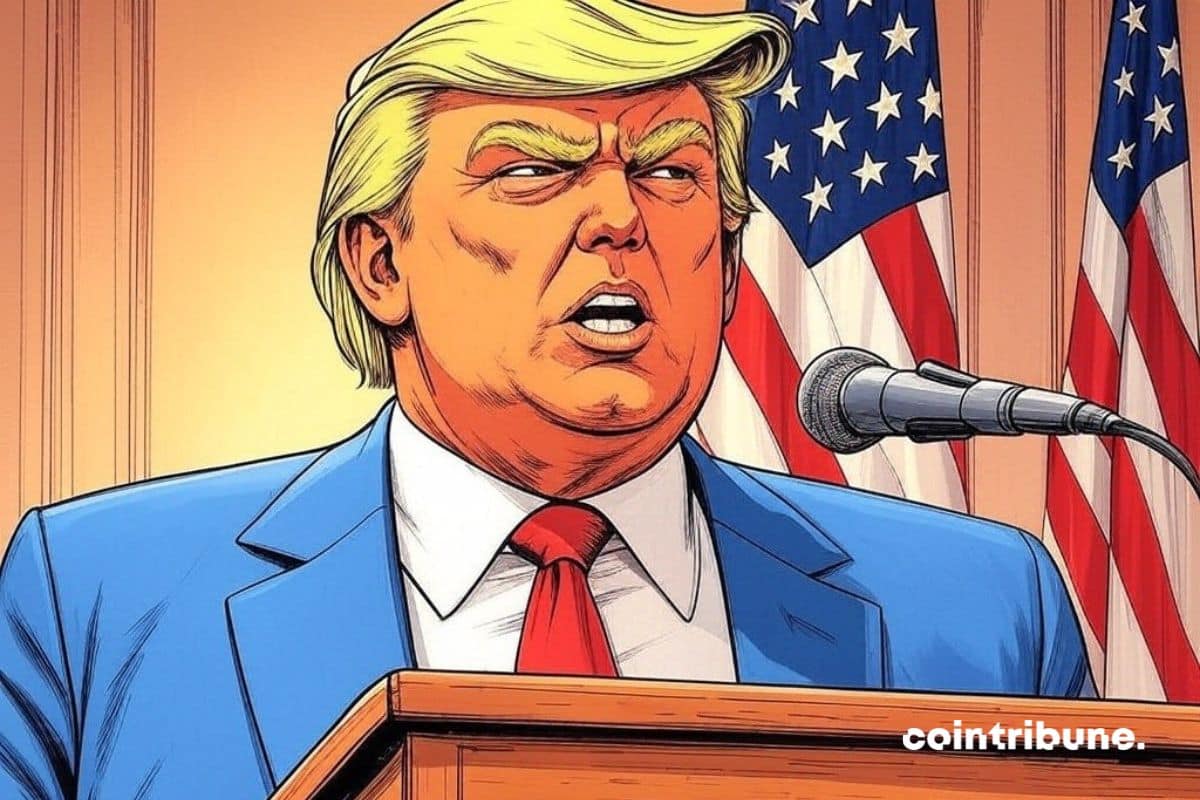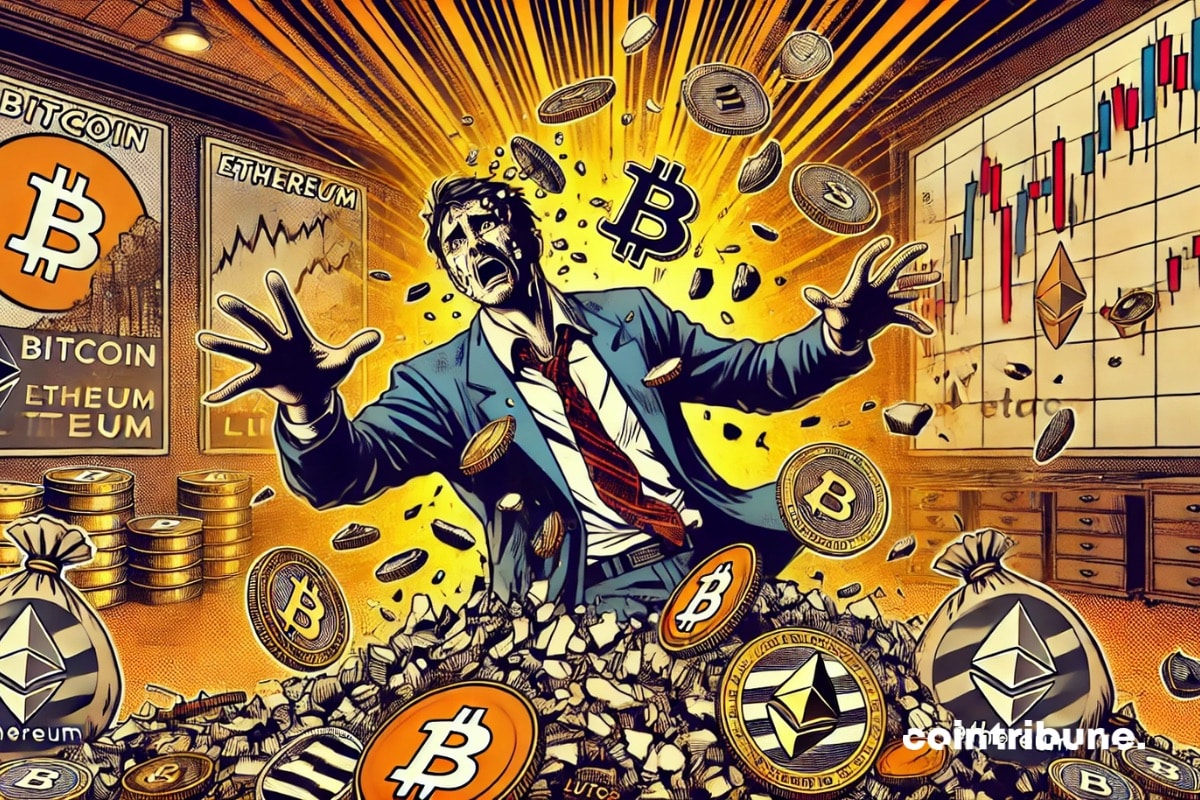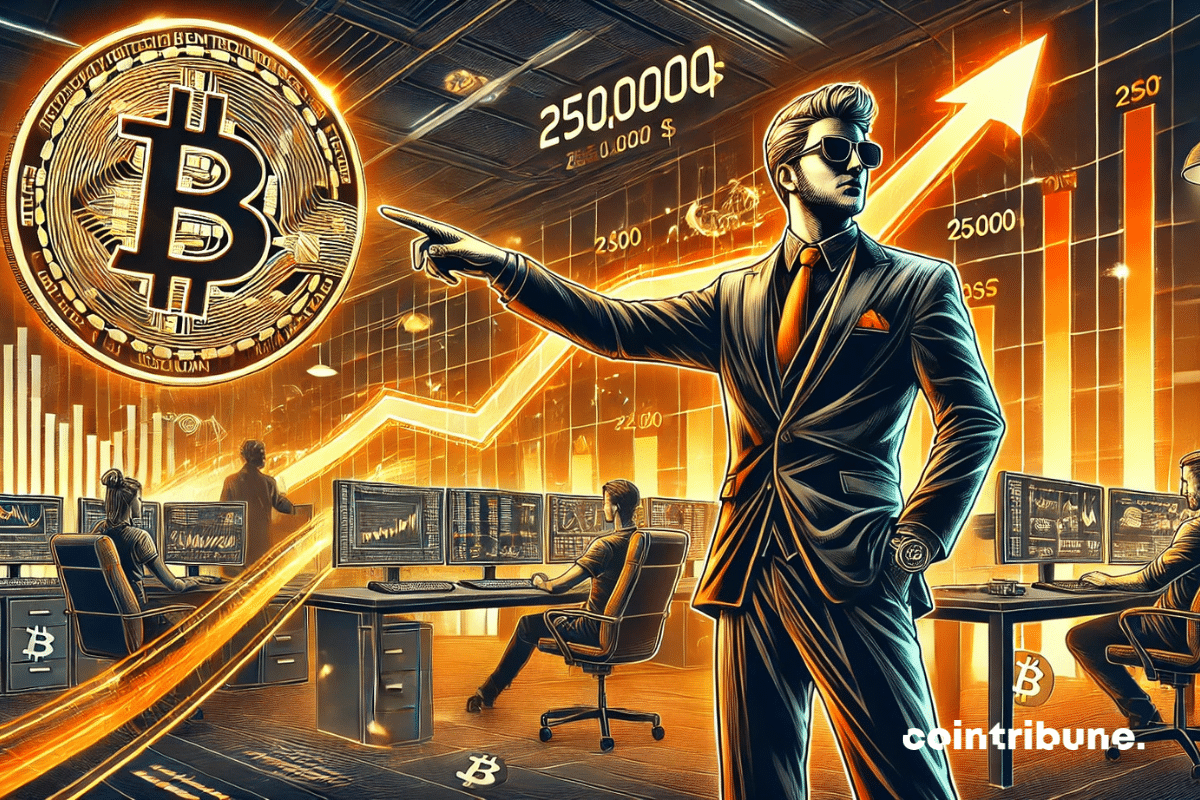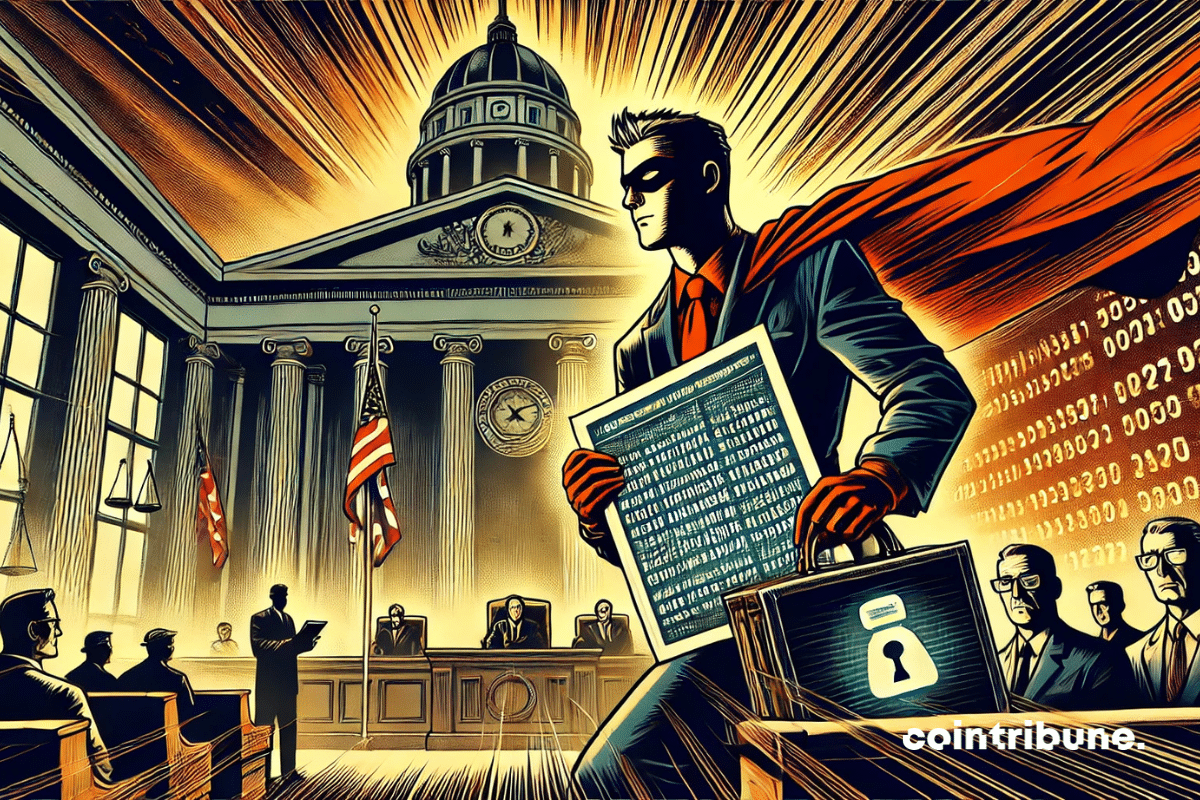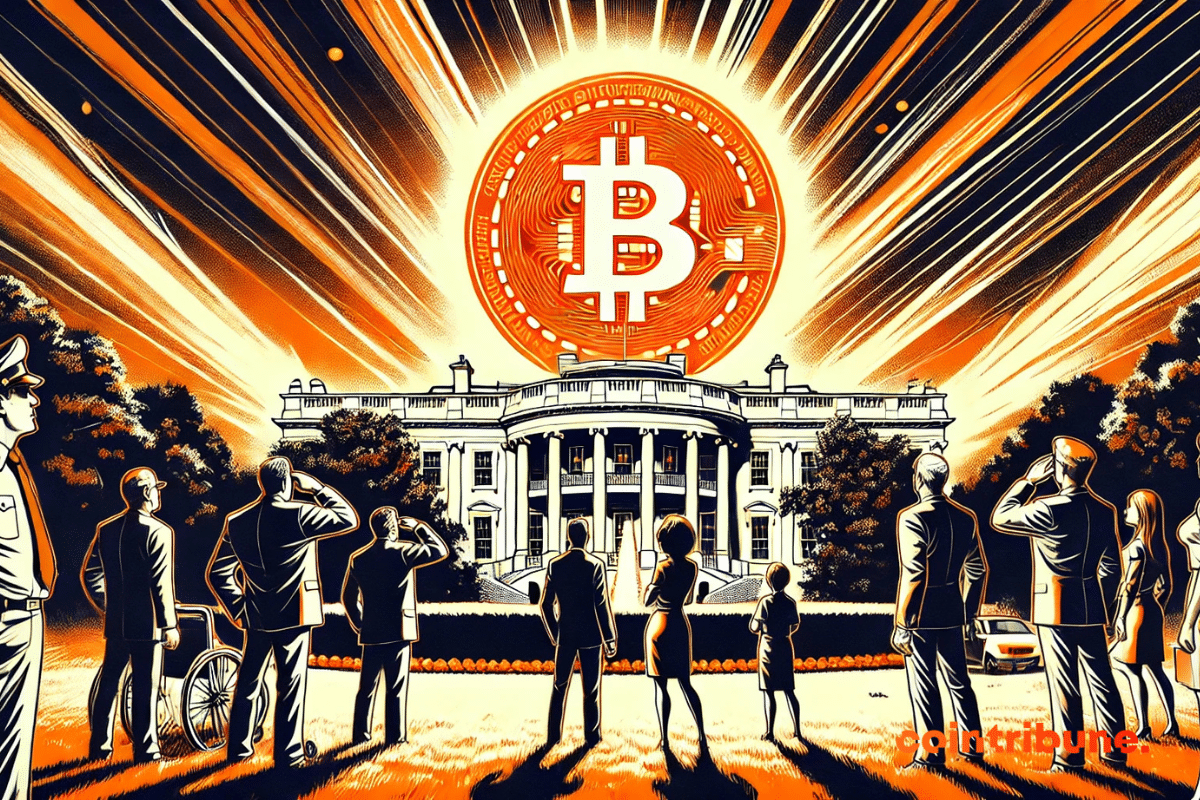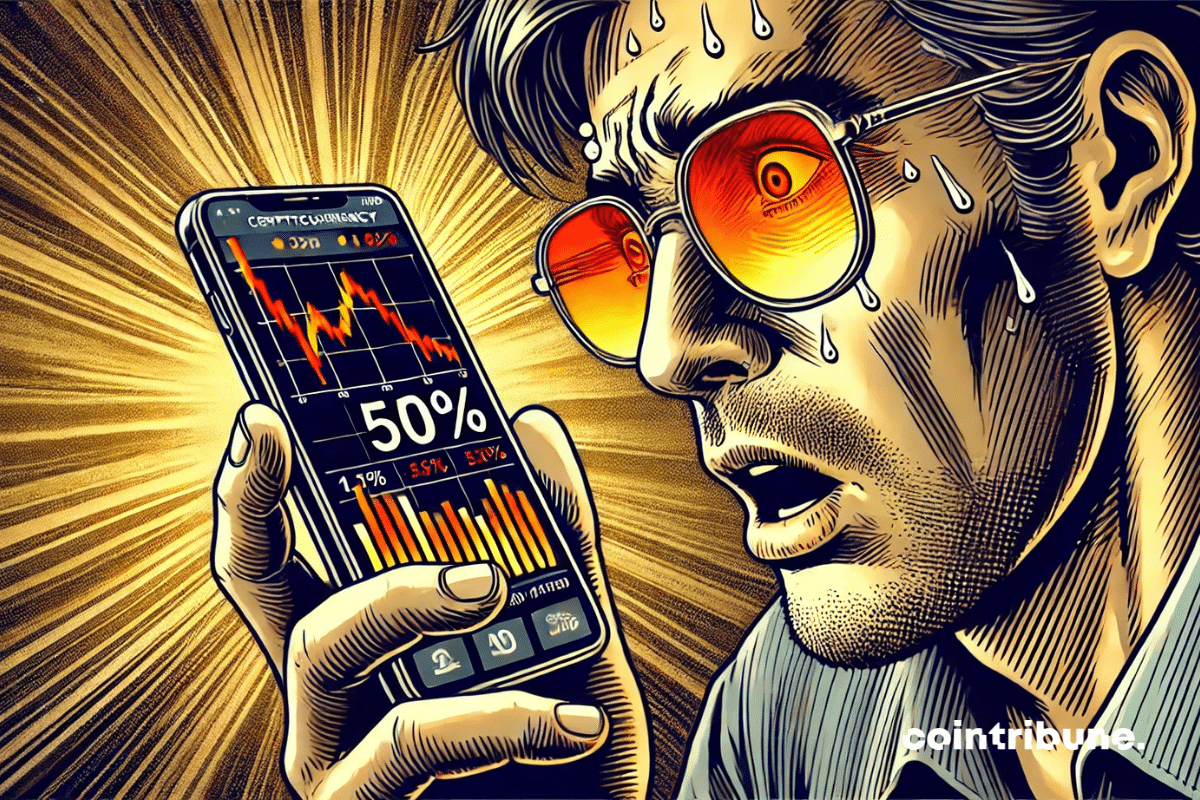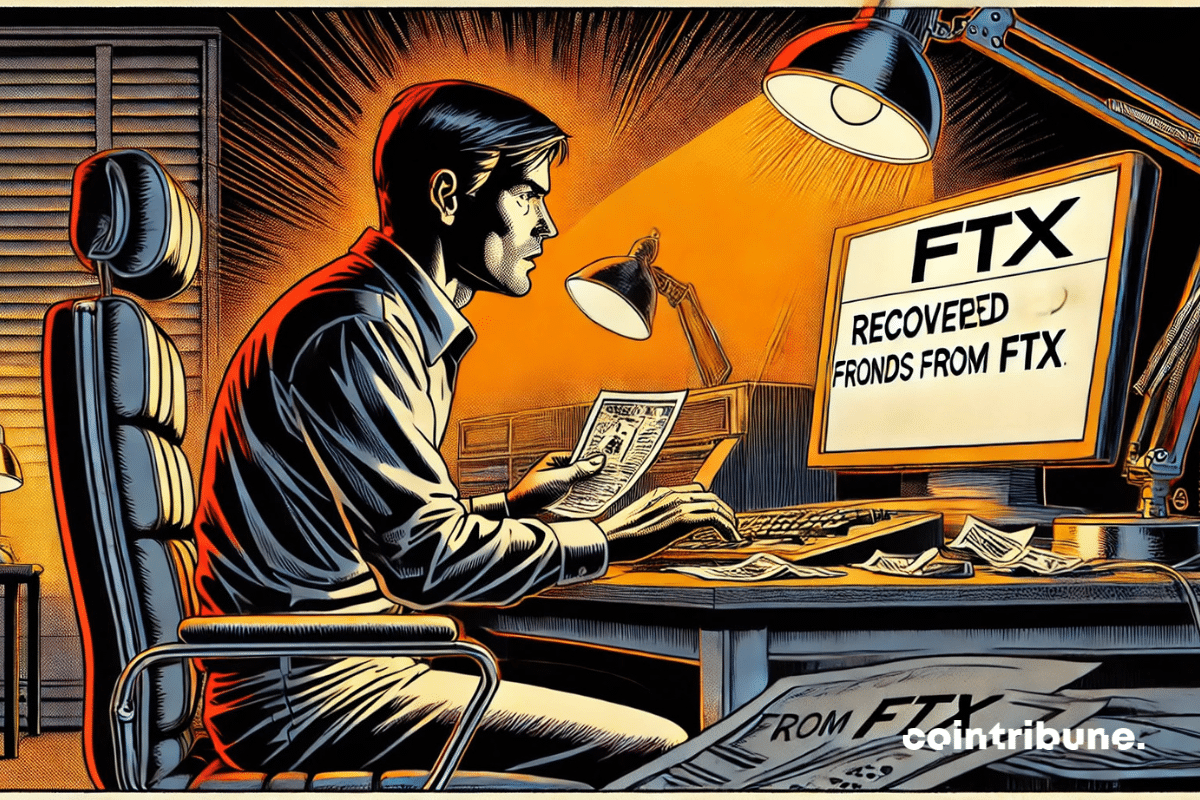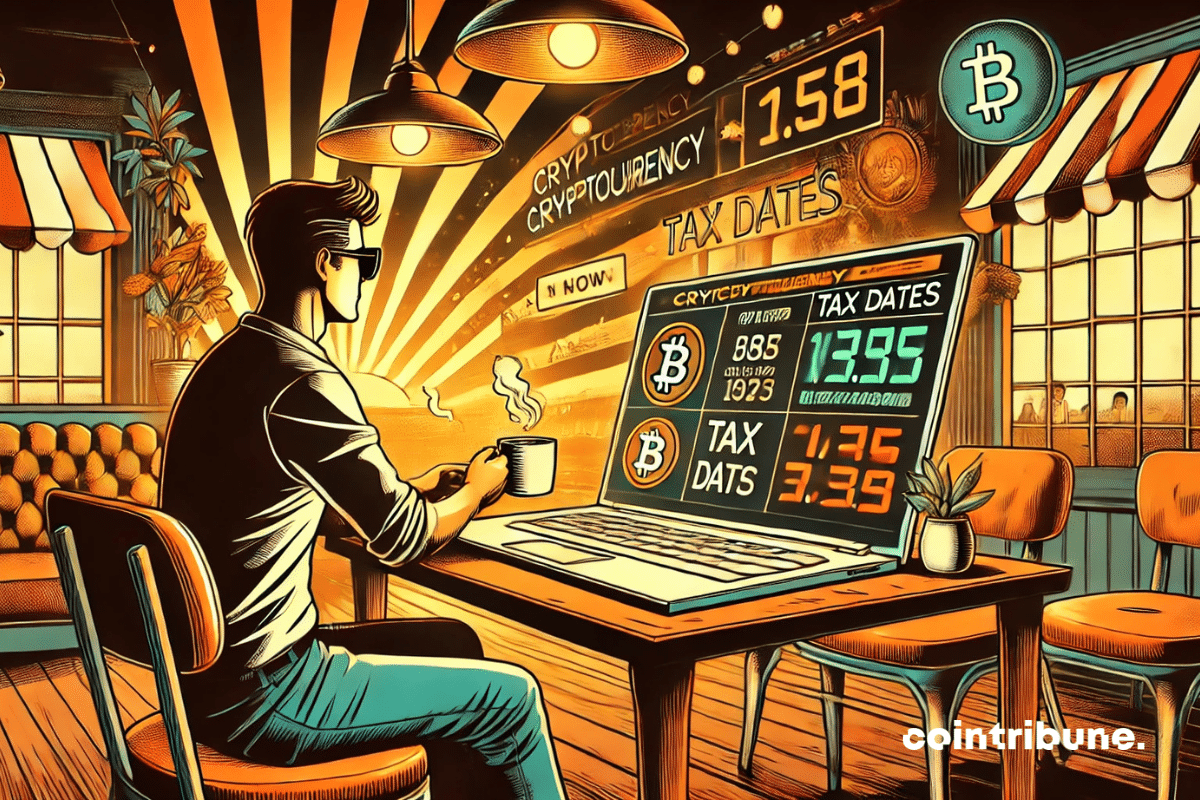Is Bitcoin losing its status as "digital gold"? JPMorgan reveals a massive shift toward gold. Details here!
Short news
Trump reheats the old dish of protectionism. Result? The markets are nauseous and Polymarket pulls out the thermometer: 50% of recession fever announced.
Centralized crypto exchanges display spectacular returns, significantly outpacing traditional stock markets. According to CoinMarketCap, these platforms offer highly lucrative opportunities despite the controversies surrounding their listing processes.
What if one of the largest banking groups bet on an outsider rather than the king of the market? In a report that shakes up certainties, Standard Chartered identifies Avalanche (AVAX) as the token to watch by 2029, with an expected performance surpassing that of bitcoin. This bold bet from a major financial institution illustrates a new interpretation of the crypto landscape, where modular and business-oriented blockchains are overtaking the historical giants. A strong signal that could redefine upcoming investment strategies.
Have you always dreamed of hitting it big with crypto? Bitpanda offers you a golden opportunity! To celebrate the 600 cryptocurrencies now available on its platform, the famous European exchange is launching an exceptional competition with 60,000 Euros in Bitcoin to win. But be careful: the offer ends soon. You have been warned!
PayPal is accelerating into the crypto space by directly integrating Solana (SOL) and Chainlink (LINK) into its wallet. This new feature is currently reserved for American users and associated territories. More than just a technical update, this decision is a significant boost for the massive adoption of cryptocurrencies. The intermediary MoonPay is no longer needed, making the experience seamless: buying, selling, and transferring these tokens becomes as simple as a few clicks. But behind this novelty lie much broader stakes. Here’s what you need to know.
A simple political speech can sometimes shake the entire crypto market. This Tuesday, an announcement by Donald Trump about new tariff increases triggered a wave of liquidations exceeding 500 million dollars. Bitcoin, Ethereum, and Solana plunged within a few hours, revealing the market's fragility in the face of geopolitical tensions. While leveraged traders were racking up losses, some institutions quietly took the opportunity to strengthen their positions.
As Bitcoin (BTC) remains above $81,000, signals of a shift in dynamics are multiplying. Recent data suggests a transition towards an accumulation phase, marked by a decline in spot sales and negative funding rates on trading platforms. This technical context, often a precursor to a bullish reversal, could well signal a forthcoming impulsive move.
In a context where crypto is infiltrating the corridors of power, an accusation shakes Washington. Representative Maxine Waters, a key figure of the Financial Services Committee, accuses Donald Trump of manipulating the legislative chessboard to impose his own crypto interests. Behind the semblance of a technical debate on stablecoins lies a much more troubling battle: that of a president seeking to replace the dollar with a digital currency bearing his likeness.
The new tariffs imposed by Donald Trump triggered a shockwave across global financial markets, prompting an immediate reaction from investors, economists, and U.S. allies.
Sentient Is Redefining AI Research With A Breakthrough Solution That Surpasses GPT-4o And Perplexity
Artificial intelligence is entering a new era. Sentient, a startup funded by Peter Thiel's Founders Fund, is launching Open Deep Search (ODS), an open-source AI search system that significantly outperforms market leaders like OpenAI's GPT-4o and Perplexity.
Cardano (ADA) has taken a decisive step in its evolution by obtaining a new listing on Coinbase, one of the largest cryptocurrency exchange platforms. This listing is not limited to retail investors but is also aimed at institutional players! Thus opening up new perspectives for betting on ADA, which could see its price explode.
Launched as a promise of crypto democratization via mobile, Pi Network is now facing its biggest turbulence zone. As its Pi token dangerously approaches its historical lows, over 126.6 million new tokens are set to be released in April. This adds extra pressure on an already fragile asset, despite a massive community and stated ambitions. In an increasingly ruthless market, the illusion of success is no longer enough: the Pi ecosystem is wavering, and doubts are settling in.
On April 2, 2025, Donald Trump spoke from the Rose Garden of the White House to announce a series of unprecedented protectionist measures, as part of what he now calls "Economic Liberation Day." True to his America First creed, the American president outlined a decree imposing massive tariffs aimed at reindustrializing the country and reducing its dependence on foreign imports. Unfortunately, the markets were not prepared for what would follow...
March 2025 marks a significant turning point in the DeFi ecosystem: Ethereum regains the lead in the rankings of blockchains in terms of trading volume on DEXs, surpassing Solana for the first time since September 2024. A turnaround that occurs in a pressured market, with a notable decline in activity on Solana, particularly on its flagship platforms.
The crypto market is heading straight towards an impending cataclysm: a staggering crash of assets with a bewildering 70% probability! This, fueled by chaotic global economic factors and the ruthless tariffs imposed by Trump. Investors are increasingly worried, but a fragile hope remains, the only thing capable of stopping this descent into hell.
At the start of this year, amid high geopolitical tension, dedollarization emerges as a strong signal of a global monetary shift. Once relegated to the background of economic debate, this dynamic is intensifying as confidence in the stability of the United States erodes. The dollar's share in global reserves is slowly but surely declining, a trend closely watched by markets and feared by strategists. Behind this retreat, the international monetary order may be entering a phase of reorganization.
Is the flagship crypto preparing to explode? Discover the bold predictions of expert Arthur Hayes on Bitcoin in 2025!
Finance is undergoing a silent yet brutal metamorphosis. Bitcoin, born from the shadows of the 2008 crisis, today embodies a revolution that shakes the foundations of banks. Between promises of emancipation and technical challenges, its rise raises the question: can it really dethrone the giants of traditional finance? Far from clichés, let us dive into an unflinching analysis.
Elon Musk, via his platform X, has filed a brief with the U.S. Supreme Court to challenge the IRS's practices regarding access to Coinbase user data. This move falls within a broader debate on privacy protection in the crypto space.
As Donald Trump prepares to announce new tariffs on "Liberation Day," investors are questioning the impact of these protectionist measures on cryptocurrencies. Contrary to initial fears, several financial analysts believe that these tariffs could, in the long run, strengthen Bitcoin's position as an alternative safe haven.
Real estate is regaining its color. After a long period of waiting, prices are rising again in many French cities, signaling an unexpected turning point in the market. This upturn, which began at the start of the year, is intensifying due to more attractive borrowing rates and a gradual return of buyers. Both professionals and individuals are closely watching this emerging dynamic, which reshuffles the cards after months of stagnation. In light of this resurgence in activity, observers are pondering: is this a simple cyclical rebound or a true reversal of the cycle?
Once again, GameStop defies expectations. Known for its stock surges and status, the video game retailer makes a new move by raising $1.5 billion through a convertible debt issuance. The stated goal: to integrate bitcoin into its balance sheet. A bold shift for a company in search of rebirth, amid a turbulent legacy and crypto ambitions.
As the tariff war reignited by Washington captures attention, Bitcoin hovers around $85,000. Some see a cause-and-effect link. However, this quick reading overlooks the essential: it is not geopolitics that is holding back the market, but the lack of concrete catalysts and a silent redistribution of flows towards safer assets. To understand this inertia, one must go beyond this analysis and follow the true signals of the market.
The crypto market under pressure: altcoins lose up to 50% in a few minutes. Discover the reasons for this brutal crash!
Paris, France – April 2, 2025 – Paris Blockchain Week (PBW), Europe’s flagship blockchain event, returns to the iconic Carrousel du Louvre from April 8–10 with its most ambitious edition to date. More than 10,000 delegates from across the globe will gather in the French capital to hear from over 400 speakers, including industry heavyweights such as Adam Back, Co-Founder and CEO of Blockstream, Charles Hoskinson, Founder of Input Output, and Monica Long, President of Ripple. They will address topics ranging from open finance to regulatory frameworks like MiCA, while other keynote speakers will explore CBDCs and enterprise Web3 adoption.
Good news for European FTX customers: Backpack, which has acquired the European subsidiary of the bankrupt exchange, is finally starting the process that allows users to recover their funds. Users can now begin the first phase of the claims process.
Ethereum is facing a dramatic drop in its revenue from blob fees, falling to its lowest levels since 2025. This 95% decrease raises major concerns about the economic future of the network…
In the shadow of tyrannies, outstretched hands receive satoshis. The HRF sows crypto light in the invisible pockets of silent resistances, where fiat no longer prevails.
In 2025, declaring your cryptocurrencies has never been so strategic. With the entry into force of the European MiCA regulation and the tightening of tax controls, holders of Bitcoin, Ethereum, or other digital assets must be extra vigilant. Mistakes can be costly: penalties, adjustments, or even suspicions of fraud. Here is a powerful guide to navigate the key dates and nuances of the French tax regime, without getting lost in administrative maze.
